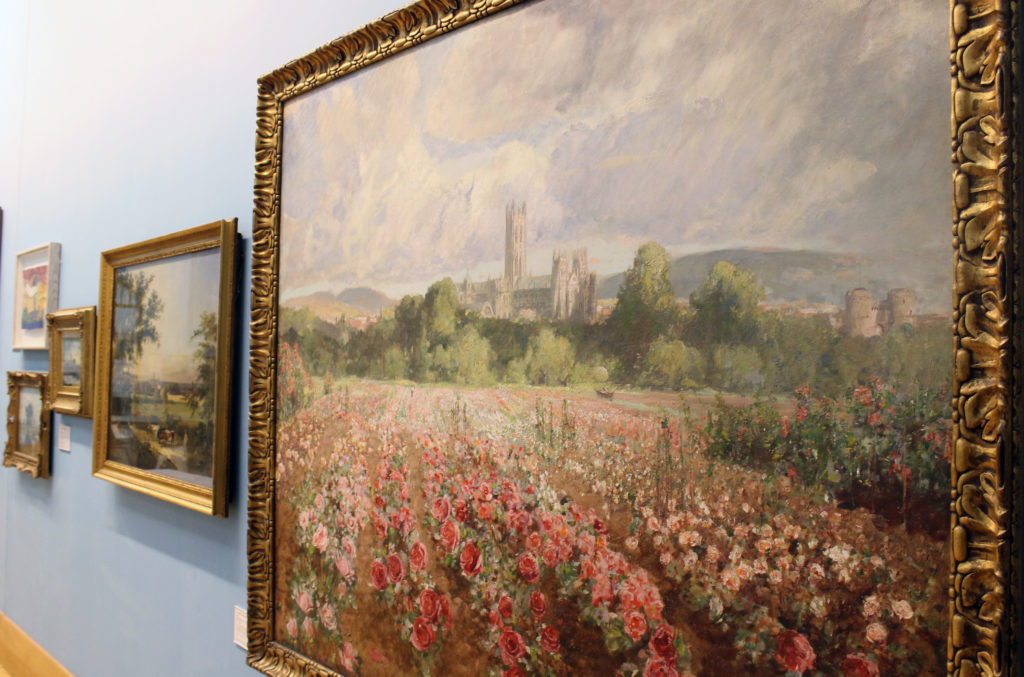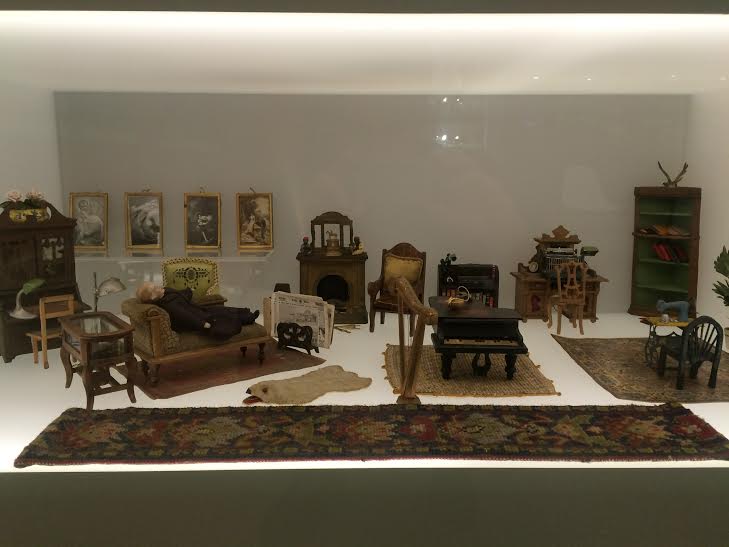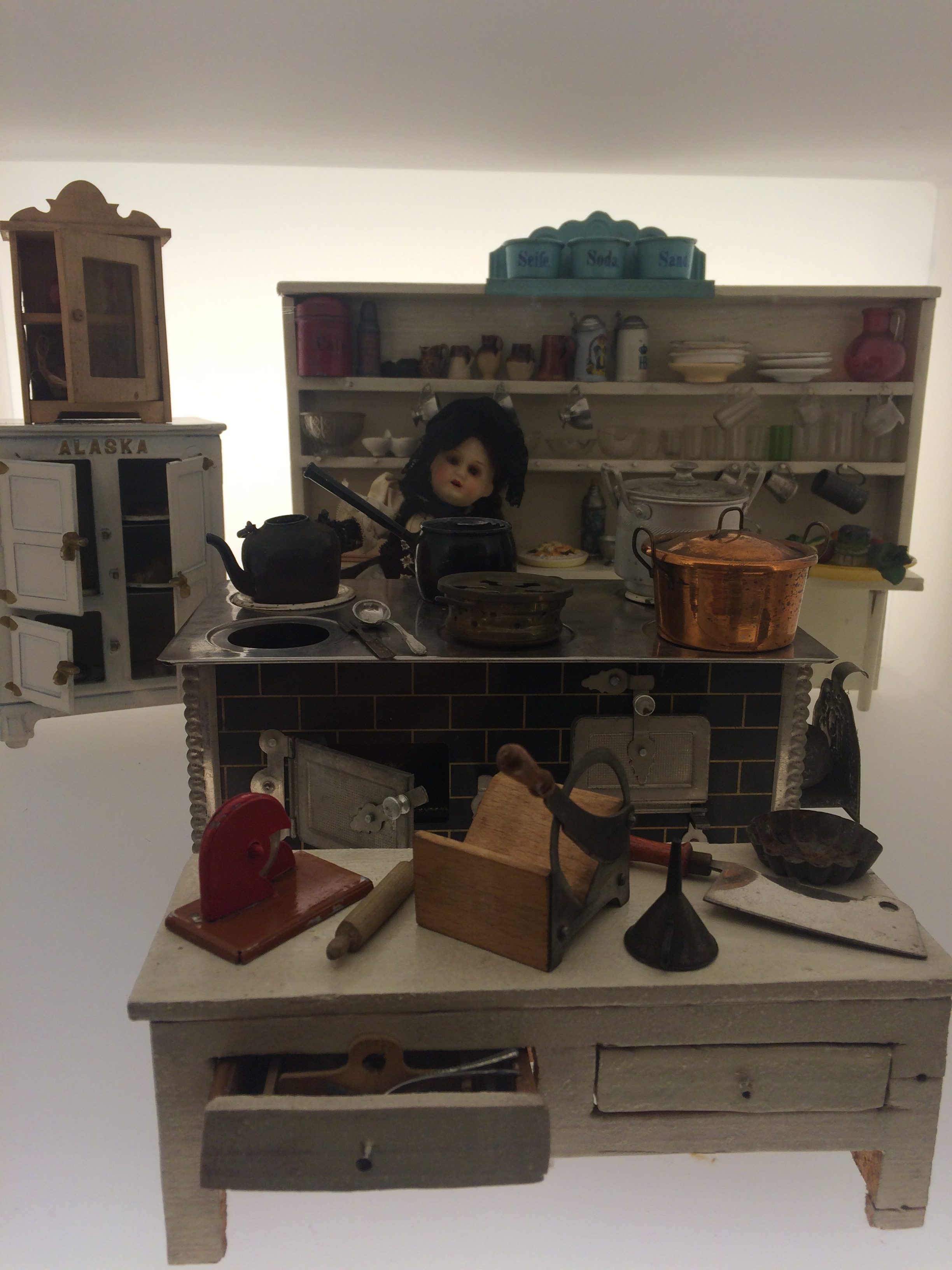
Easter fun at the museums!
Exhibitions, trails and activities; six fun things for all the family to enjoy at The Beaney and...
Wish you were here.
It’s 9 am and The Beaney is waking up. I take the side entrance, through the automatic door, across the way a soft lift lands on the ground floor with a ding. I’m not the first to arrive. Pleasant mumble, a sniff and a sneeze, footsteps, and a couple of ‘good mornings’ as I pass the information desk into the café where I am met with the reassuring smell of coffee and cake (love the smell of coffee, and there’s a decent selection, but I’m a tea drinker accompanied by a biscuit or three, all of which are available of course). Mechanical steam, more footsteps, mumbles, mornings, and a swoosh of the front door through the corridor I find myself wondering upstairs past a gorgeous Dutch stained glass window which allows just enough light at this angle to offer me a taster of what’s to come.
There’s a hum at the top of the stairs. There are artefacts in a glass cabinet in front of me, a lion’s head takes my fancy and for some reason I am reminded of a scene from one of Basil Rathbone’s Sherlock Holmes stories. There is much to discover to the right of me but I am guided by a lone voice to the left. Walking through the intriguing collection of taxidermy towards the voice, a wonderfully rich waft of hot pot or beef soup from the café captures me for a moment between a couple of birds and a bat. The irony doesn’t escape me. The voice is coming from The Drawing Room, echoing gently with intent. The voice belongs to Martha A Hall, featured artist in the new exhibition, ‘Prescriptions: artists’ books on wellbeing and medicine’. A former teacher and professional weaver, Hall was diagnosed with breast cancer after which she advocated improved cancer treatment. Hall’s book art documents her experiences with breast cancer and interactions with the medical community before she sadly died in 2003 and is definitely worth a look. There’s a kind of video diary of Hall talking about her work which seems to pull the whole exhibition together, a voice from the past, a poignant reminder, a valuable moment caught between the pages of time.
As I enter the Materials and Masters’ room, the hum from earlier returns.
The hum of the air conditioning foregrounds this brilliantly clean space, an exquisite waiting room for artists’ artefacts and their daily adventures through visitors’ imaginations. I feel like Dave, the main character from ‘Stanley Kubrick’s 2001: A space Odyssey’ in one of the closing scenes in the room where he meets different versions of himself throughout time, where the Georgian furniture seems to hang suspended over a floor of brilliant white, each piece placed exactly, in anticipation, and Dave, dressed in a full astronaut suit stares in wonder (and anticipation). Where is he? In a collection of his conscious and unconscious thoughts or memories? Does it matter?
The collection in Materials and Masters’ room is as varied and stimulating as anything in that famous scene. One artefact in particular draws my attention as I climb out of my space suit and wonder over to get a better look.

The ‘Dolls and doll’s house furniture’ is a display selected and arranged by artist and puppeteer Estelle Rosenfield. The furniture and domestic objects were collected by Miss G H Veroguth (1880-1974). Her mother was English and her father was Swiss and she was educated at a Belgian convent school. Many items were collected during her travels on the continent and in England and some were made by Miss Veroguth herself from kits. The dolls were bequeathed by Miss Anne Clelland, 2003. Above the main display sits a piece of work called ‘Chairful’ by Halla Hannesdottir who was The Beaney’s artist in residence in 2015. The work is the result of her investigation into the world of the miniature as part of her exploration into sentimental attachment towards objects. Halla was inspired by The Beaney’s collection of miniature furniture, in particular their different styles and functions. She created a series of drawings and miniature chair models which incorporate different functions and quirks which places them in this unique and imaginative world. Halla invited visitors to design their own chairs which Halla made into wooden miniatures, a selection of which sits above the main display.

It makes me feel both nostalgic and positively displaced, reminded of all that we leave behind, that which we can’t take with us. The cabinet reminds me of my Nan and Grandad De Ville’s cabinet of curiosities in their kitchen diner in their prefabricated council house in King’s Heath, Birmingham in the late 1970’s early 1980’s. It reminds me of a scene or three from a Quay Brothers animation (https://zeitgeistfilms.com/film/thequaysin35mm), a feeling of warmth, and suspense, wondering if I’ll be caught in the act of voyeurism (wouldn’t you?). Peering into the cabinet’s rooms, there’s a sense of loss, a perfect stillness but also a playfulness in imagining what happens when the lights go out. My grandparent’s cabinet contained glassware, saucers, salt and pepper pots, various knick-knacks and a doll made from pipe cleaners. This doll never moved (not that I ever expected it to move by itself…or did I?) and sat under the layers of decades of dust. It’s still a vivid image for me, one that connects me with the smell of mint sauce and the taste of home-made Yorkshire pudding. Everything was brown in that room (even the mint sauce strangely). There’s something in the wood in Miss Veroguth’s miniatures that takes me there as though it were yesterday. My Nan also collected miniatures, incidentally, and not on purpose.
Miss Veroguth’s collection has transformative powers in that it can whisk me away to another time and place, and in doing so, raises its anchor from its origins to sail a new sea. A lady walks into the room, and stops to tell me this is her favourite piece and that it reminds her of Anne Frank’s home in Amsterdam. Having been to the house (now a museum), we exchange stories. (She’s never heard of the Quay brothers, but that’s ok. I wonder if she’ll partake in the hot pot, or soup?).
The cabinet feels like a miniature version of that room from 2001: A Space odyssey, with the furniture suspended over a floor of brilliant white…hang on, so I’m kind of in a smaller version of the Materials and Masters’ room? Yes, but wait, in one of Miss Veroguth’s rooms, there’s a miniature dolls house…where did I leave my space suit?
I’m back in the room, the bigger room that is, you know, and I can hear Martha A Hall’s voice harmonising with the automatic door to the Special Exhibitions Room and a strange repetitive bleeping noise emanating from one of the Magic Lantern’s exhibit’s interpretive pieces, a father and daughter hurrying excitedly up the stairs, the hum from the air conditioning and the smell of hot pot (or soup) coming from the kitchen as I look into the kitchen room in the cabinet where a doll is taking a rest from some heavy duty cleaving. Is it looking at me?

The layers of work it has taken to put this work together, building the scene, and the feelings it generates, and associations it conjures are enchanting, and these feelings and imaginings are different for everyone given the combination of its original story, the varying soundscape from around the building and the history and culture we each bring to it. This work, this artefact is a Talisman of the Imagination.
It’s still early and as I hear someone rolling a penny into the collection box downstairs, some exciting questions spring to mind, ones which I look forward to exploring:
What if we could further encourage and share what these artefacts inspire within us, whether these responses were directly connected to the artefact or not? They are after all, very real, honest responses. How might this sharing benefit the artefact?
If these artefacts have a duel role, that of presenting themselves from the point of origin (the real) and enabling an interpretive response (the imaginary), how might we sustain these multiple perspectives? What might they take with them from the passers-by and what might they leave behind?
For my first visit, I experienced a brief encounter between the real and the imaginary. The sharing of stories between myself and the passer-by made the artefact resonate all the more, made it come alive, made it feel more relevant, and strengthened for its continuing journey of survival through time and changing cultures as a Talisman of the Imagination.
And so my journey begins. Now, is it too early for that hot pot (or indeed soup)?
